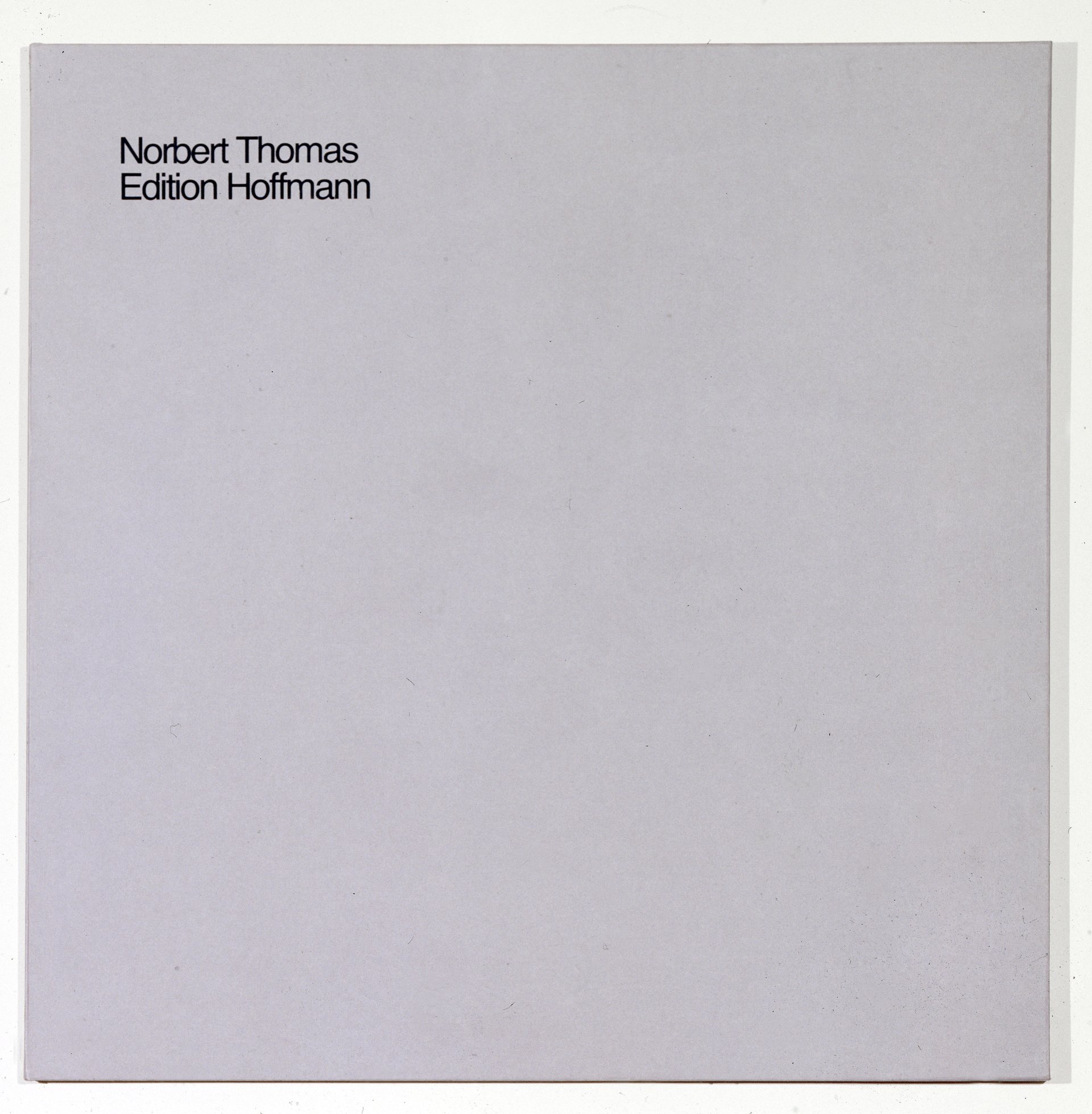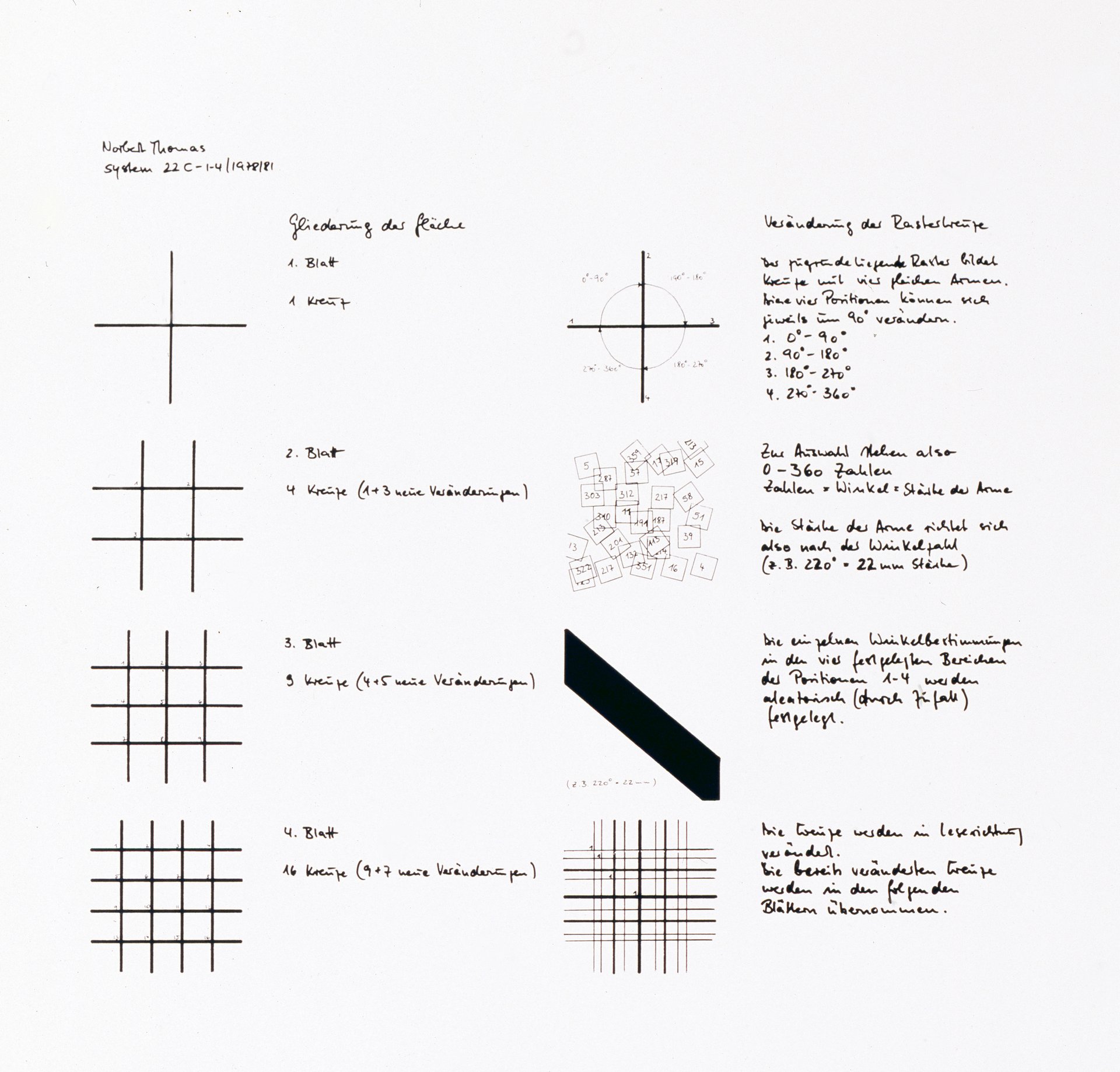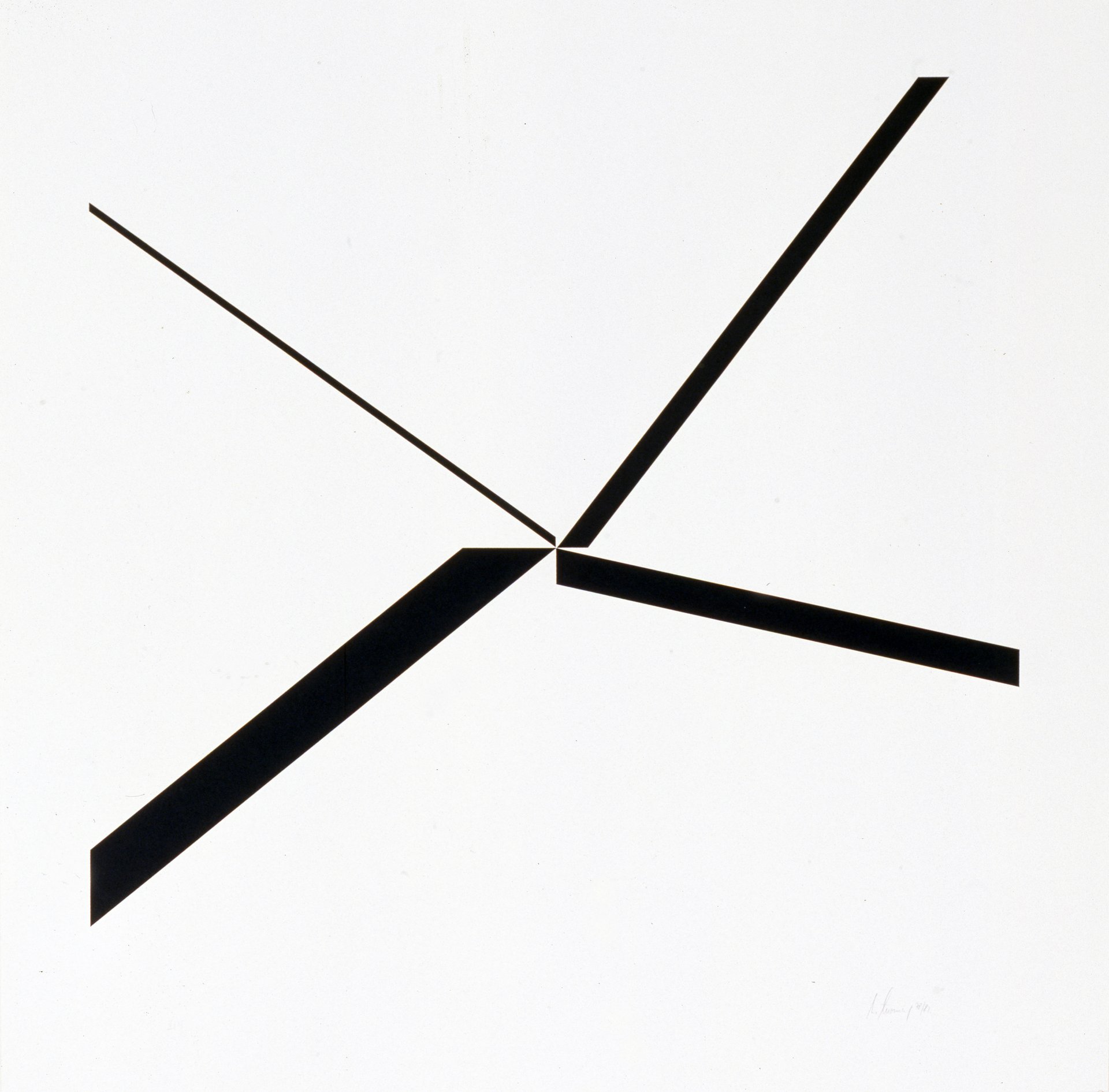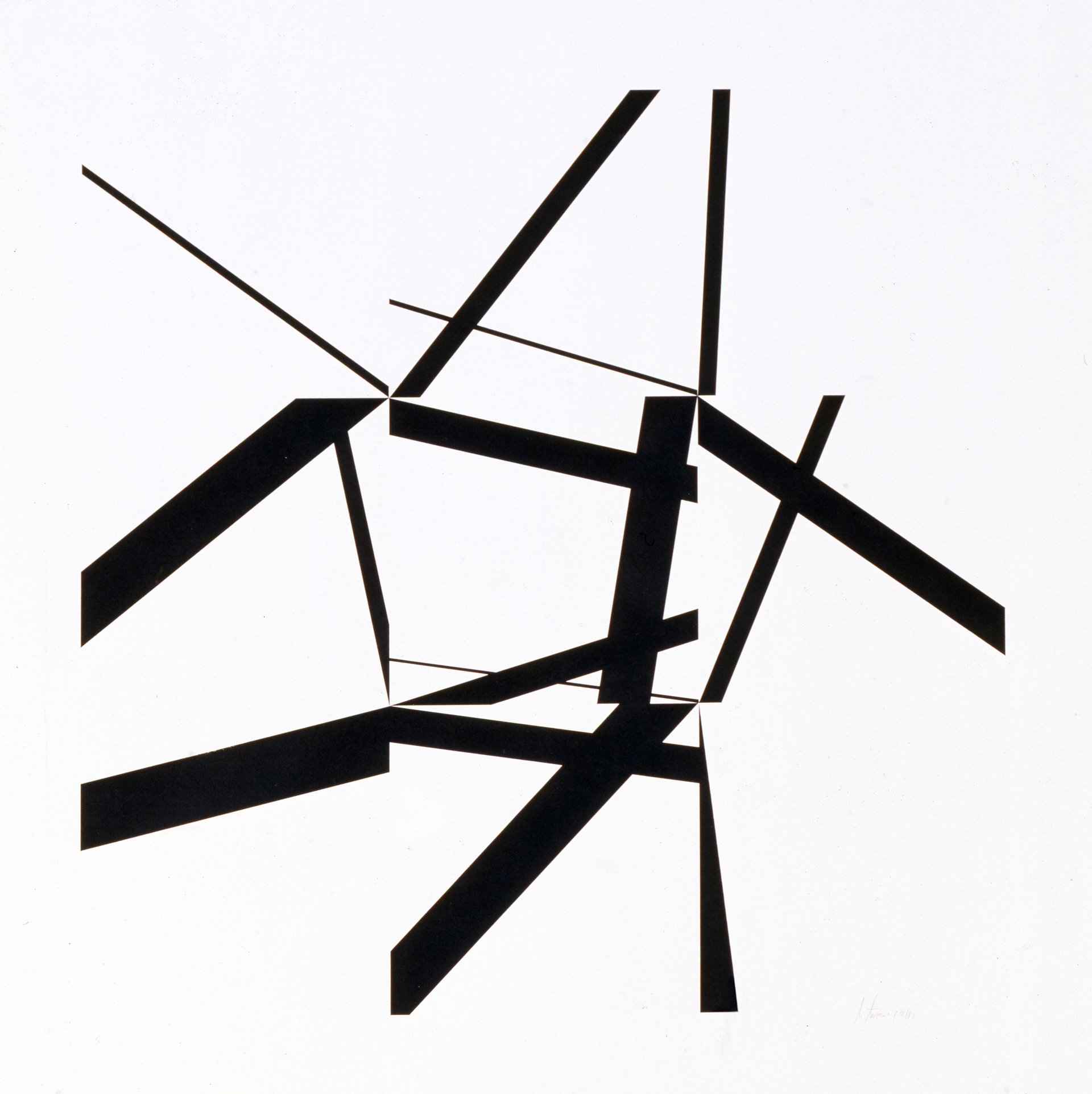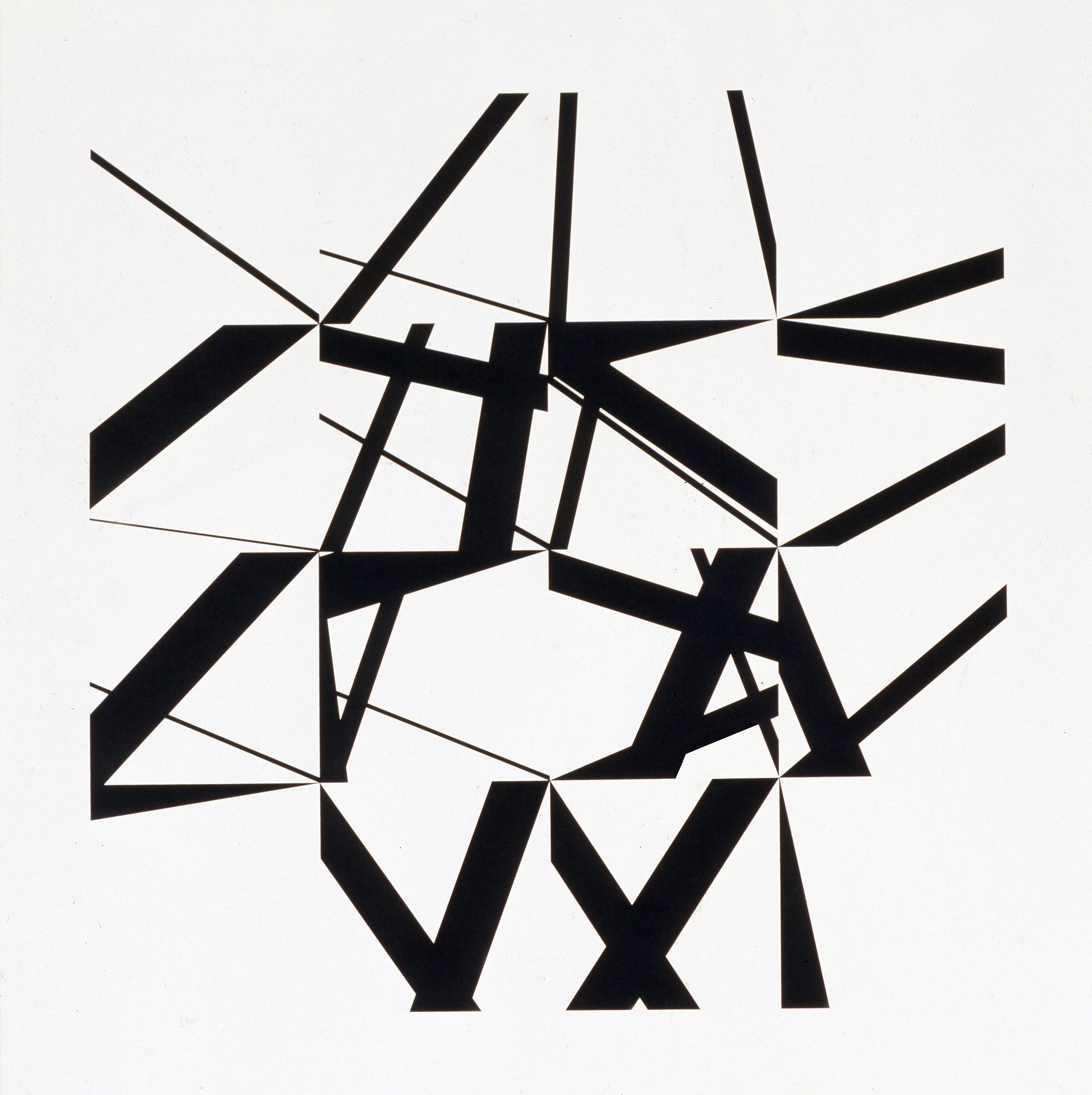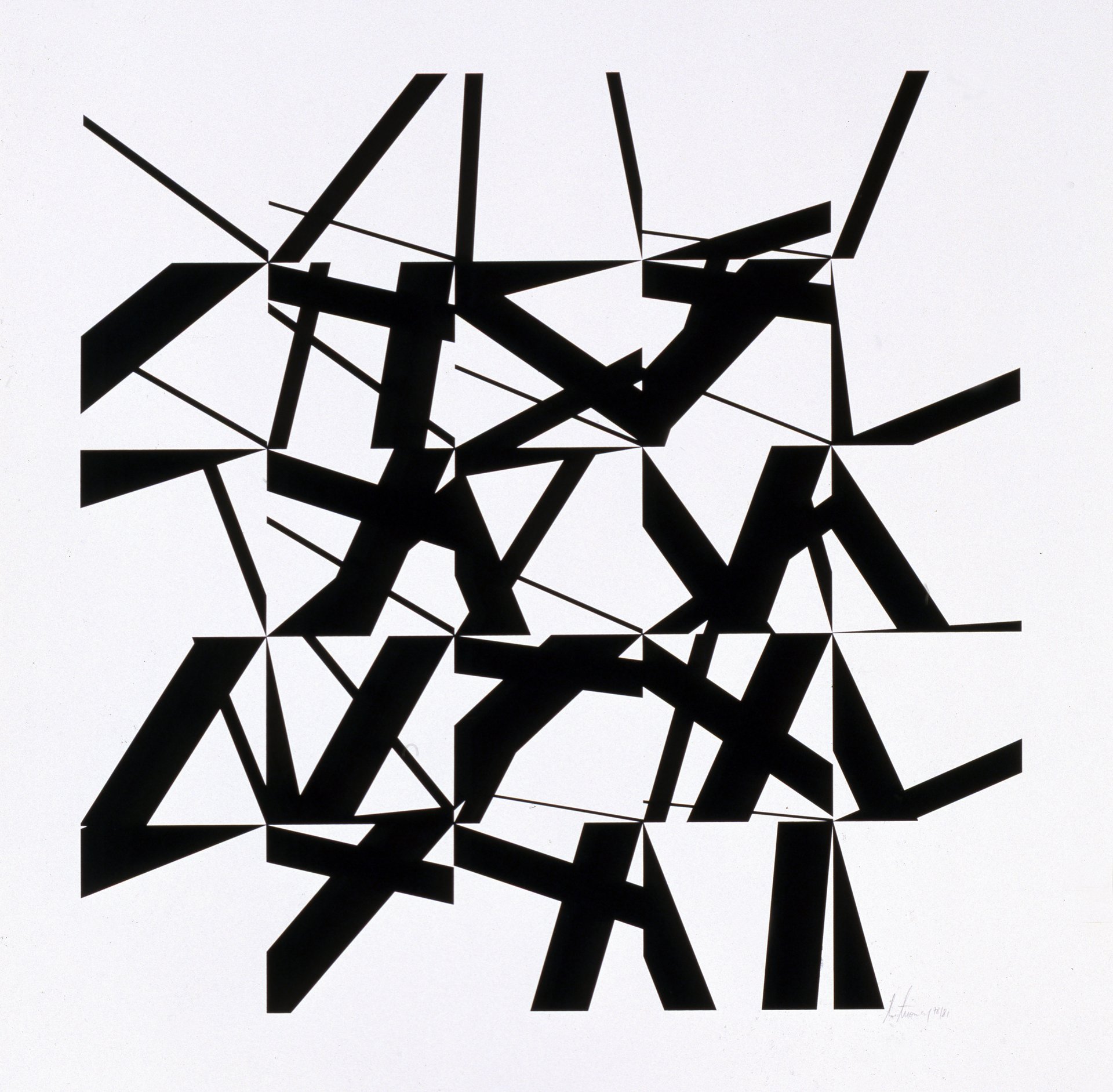[...] the complete subjugation of aesthetic, visual processes to scientific methods had to lead to the fact that art missed its actual goal, aesthetic redundancy. nevertheless, more recent generations of artists have not forgotten the basic idea of this historical development: to make the methods and conditions of their practices tangible in each individual work of art and thus "verifiable" for the recipients. a term, incidentally, that plays a considerable role in systematic-constructive art, because it describes the objective dimension of this artistic approach, an art that is not, as norbert thomas writes, drawn “from the hollow belly", but arises on the basis of logical processes.
it was the generation of artists to which thomas belongs that began to sense a certain dogmatization of systematized methods and sought ways to find new freedom for their subjective gestaltungsbedürfnisse (creative needs). most important was not to give up the foundation of the systematic-constructive approach; i.e. controllability and the logic of the underlying concepts were not to be abolished in favor of a new "sensibility" or a misunderstood "freedom," which in reality is only arbitrariness. thomas belongs to those artists who work with a method that initially might seem paradoxical: "planned coincidence". he writes: "the contradiction—planned chance—means only apparently a conscious inclusion of chance as a gestaltendes (formative) element—but not in the sense of an arbitrary appearance."
in his practice, thomas complied with a basic rule that has been violated by many artists of his milieu, namely, the that an aesthetic decision must precede the choice of working method and system, not vice versa, that aesthetic value underlies the logic of the sytem. the difference is simple: a curve that appears as a visualization of a mathematical formula may well have a high aesthetic value. nevertheless, it remains nothing more than a mere function; its artistic value is exhausted precisely there. thomas has therefore preceded each logical step within the system with a visual decision and thus, as an artist, keeps the overall effect in mind. this well documented in the four sheets of this portfolio.
hans-peter riese, 1981 (excerpt, translation from the original german)
